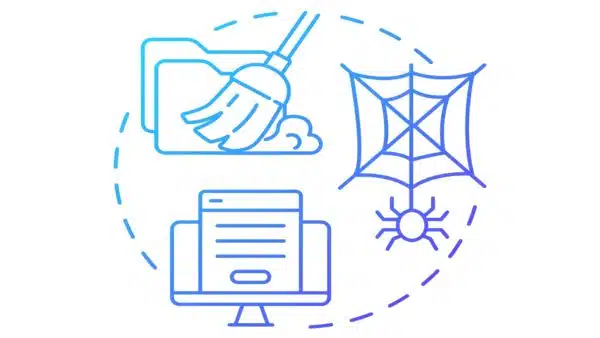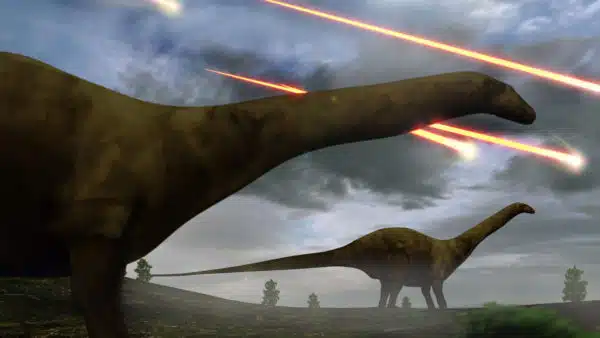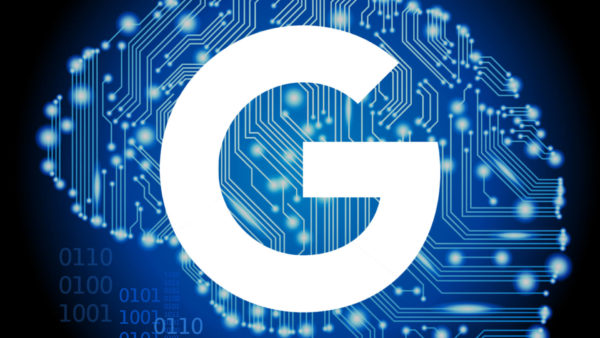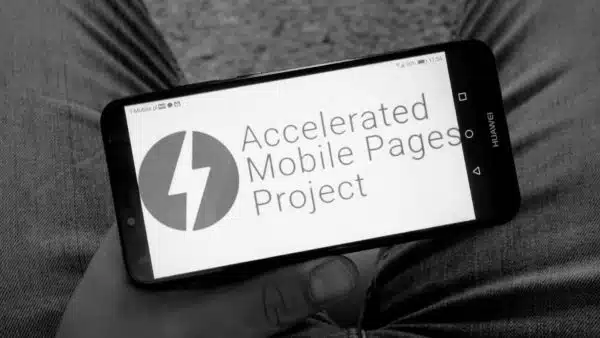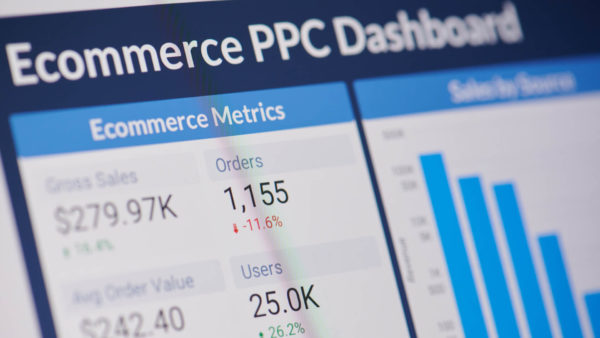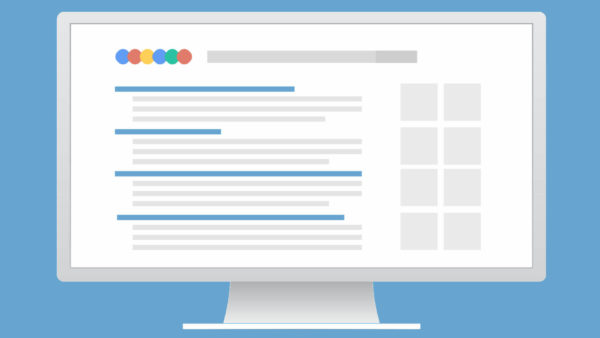Google has a long history of famous algorithm updates, search index changes and refreshes. Here is a timeline of major Google search algorithm updates.
Want to read our latest coverage of algorithm updates and changes? Jump to the latest Google algorithm news and insights.
How many times does Google update its search algorithms?
Google Search is constantly changing. Google launched 4,725 changes to search – including changes to its ranking systems, user interface and more – in 2022. That means Google Search is changing 13 times per day, on average.
But really, it could change even more than that if you’re opted into one or many experiments. Google also said in 2022 it ran:
- 13,280 live traffic experiments
- 894,660 search quality tests
- 148,038 side-by-side experiments
Many of these changes are minor. But algorithm updates tend to have a bigger, more noticeable impact. Algorithm updates can result in big wins or losses in rankings, traffic and revenue.
Has the Google Algorithm Changed?
A few of Google’s most significant and disruptive algorithm updates recently is the Helpful Content Update from 2022, which targeted and penalized sites created solely to boost search rankings. The September 2023 update focused on promoting useful and original content, while the March 2024 update pushed more AI-generated content to the top of search results, ensuring it meets the quality standards of leading websites.
The history of Google algorithm updates: 2003-today
Here is a complete history of Google algorithm updates that you need to know about, in reverse chronological order.
2024 Google algorithm updates
Aug. 15
July 31
- Updated its ranking system to help ensure deepfake content does not rank highly in Google Search.
- Google aims to show “surface high-quality, non-explicit content — like relevant news articles — when it’s available” instead of deepfakes.
June 20
May 6
- Google said third-party content produced primarily for ranking purposes and without close oversight of a website owner would be considered spam. For example, a third party publishing payday loan reviews on a trusted educational website.
- Some SEOs refer to this practice as “parasite SEO.”
- Google pre-announced this update as part of its rollout of the March 2024 core update and spam updates (March 5).
- Google will take both automated and manual actions. As far as we know, Google never launched this algorithmically.
March 5
- A more complex algorithm update, with multiple core systems getting updated and released, resulting in more fluctuations in rankings than a regular core update.
- Google said unhelpful content in Search would be reduced by 40%.
- Update will take up to a month to rollout.
- Google’s helpful content system was incorporated into its overall core ranking system.
March 5
- Scaled content abuse (producing content at scale to boost search rankings – whether with automation, people or a combination) was classified as search spam.
- Expired domain abuse (buying expired domains and repurposing them with the “intention of boosting the search ranking of low-quality content”) was classified as spam.
- Google started taking action against these new types of spam through algorithmic spam systems and manual actions.
- Rollout completed March 20 (14 days)
2023 Google algorithm updates
Dec. 16
- Google confirmed “openness” (whether a business is currently open) became a stronger signal for non-navigational queries.
Nov. 8
- Google said, heading forward, its reviews system would be “improved at a regular and ongoing pace,” so they would no longer announce future updates.
- Rollout completed Dec. 7 (29 days)
- Rollout overlapped with November 2023 core update (Nov. 2).
Nov. 2
Oct. 5
Oct. 4
- Improved Google’s “coverage in many languages” (including Turkish, Vietnamese, Indonesian, Hindi, Chinese) “and spam types” (cloaking, hacked, auto-generated, and scraped).
- Rollout completed Oct. 20 (15 days).
- Rollout overlapped with October 2023 core update (Oct. 5).
Sept. 14
Aug. 22
May 23
- This system aims to help surface relevant, expert and knowledgeable content in Google Search and Google News.
- The system looks at several signals to understand the expertise of a publication on a specific topic or location.
- Google said they have been using this system for “several years,” but this was the first time discussing it.
April 12
March 15
Feb. 21
2022 Google algorithm updates
Dec. 14
Dec. 6
Oct. 19
- Google did not specifically say whether this update was focused on links, content or other forms of spam.
- Global update, impacted all languages.
- Rollout completed: Oct. 21 (less than 48 hours).
Sept. 20
Sept. 12
Aug. 25
- A sitewide signal meant to reward content that helps or informs people, rather than created primarily to rank well in search results.
- Google provided a list of 15 questions to ask about your content reviews to ensure you are building human-first content.
- Google said online education materials, arts and entertainment, shopping and tech-related content would be most impacted. However, the impact was mostly felt in a few categories (e.g., ringtones, coding, lyrics).
- Announced Aug. 18, it began rolling out Aug. 25.
- Rollout completed: Sept. 9 (15 days)
- Its overall impact was relatively small.
July 27
- Google was likely refreshing the algorithm (and possibly making slight adjustments) to better reward high-quality product reviews.
- Referenced the standard help document on how to write product reviews.
- Rollout completed: Aug. 4 (6 days)
- This update was not as widespread and had little ranking volatility compared to prior product review updates.
May 25
- Like past core updates, Google broadly changed how its ranking systems assessed content.
- This was the first broad core algorithm update of 2022 and the first in more than 6 months.
- Rollout completed: June 9 (15 days)
- Its impact seemed significant and more volatile than the November 2021 core update.
March 23
- Meant to help Google better identify high-quality product reviews and reward them with better rankings.
- Google added new criteria for what matters with the product reviews update (helpful in-depth details, expertise, unique information and covering comparable products).
- Google added new advice around ranked lists, recommendations of “best” products and creating reviews for multiple vs. individual products.
- Rollout completed: April 11 (19 days)
- Impact was not as widespread as prior product reviews updates.
Feb. 22
2021 Google algorithm updates
Dec. 1
- Designed to reward product reviews that shared insightful analysis and in-depth, original research.
- Google added new advice for this update on providing more multimedia “evidence” and including links to multiple sellers.
- Began rolling out a day after the November 2021 core update was completed.
- Rollout completed: Dec. 21 (20 days)
- Update was bigger than the April 2021 product reviews update and pretty volatile.
Nov. 30
- Google said it rebalanced various factors it considered in generating local search results.
- Google didn’t confirm this update happened until Dec. 16.
- Overlapped with other ranking updates (product reviews, core update) and a Google map and local pack update design change.
- Rollout completed: Dec. 8 (9 days).
Nov. 17
Nov. 3
- Google announced an update to its search spam detection systems.
- Google’s guidance: follow Google’s best practices for search (a.k.a., Google’s Webmaster Guidelines).
- Rollout completed: Nov. 11 (8 days)
July 26
- Google said the purpose of this update was to “nullify” spammy links across the web and multiple languages.
- Websites with spammy links were more likely to see an impact on their rankings.
- Google’s advice: follow best practices for all incoming and outgoing links.
- Rollout completed: Aug. 24 (29 days)
July 1
June 28
- The promised sequel of its Spam Update.
- We learned that both parts of the Spam Update were “global” updates targeting web and image results.
June 23
- Google announced the release of a Spam Update to their systems and said a second was coming the following week.
- There was no additional guidance or details.
- As part of the Twitter announcement, Google referenced its Webmaster Guidelines.
June 15
- This new ranking algorithm was announced in May 2020.
- Google began using a new set of metrics – Core Web Vitals – to understand how users perceive the experience of a specific web page.
- The three Core Web Vitals metrics were Largest Contentful Paint (LCP) (measured loading performance); First Input Delay (FID) (measured interactivity); Cumulative Layout Shift (CLS): (measured visual stability).
- Part of the Page Experience Update includes existing ranking signals, such as page load speed, mobile-friendliness, HTTPS and lack of intrusive ads.
- Rollout completed: Sept. 2 (79 days)
June
June 2
- This was the first of two back-to-back core updates. Google decided to release these updates separately because some of the updates they planned to roll out weren’t ready.
- Like other Google core updates, the June 2021 update was comprehensive and wide-reaching. It’s likely many sites felt the impact of this update.
- Rollout completed: June 15 (13 days)
- A mixed view of the update – when it hit the hardest, who it hit the most and the overall impact.
April 8
- The Product Reviews Update is meant to better reward product reviews that go above and beyond (e.g., by including in-depth and original research, insightful analysis). Google said it will promote these types of product reviews in its search results rankings.
- Google provided a list of nine questions to ask about your product reviews to make sure they are insightful, include original research and are written by experts or enthusiasts who know the topic well.
Feb. 10
- Google began rolling out a change to how it ranks specific passages from a webpage in search results. This update was meant to help searchers find specific “needle-in-a-haystack” information. Google said this update would impact 7% of search queries across all languages.
- Because this update was more about how Google understands your content, there was no specific advice on things to address or change, according to Google.
2020 Google algorithm updates
Dec. 3
- The 2020 Core Update was the last major update of 2020 and the first major update since May of that year.
- Like all of Google’s core updates, the December 2020 core update was wide-reaching, impacting websites across all languages.
Oct. 15
- Google announced that BERT was powering nearly all English-based search queries, a big leap from 10% it powered the year prior.
- You cannot optimize for BERT per se, as BERT is designed to improve the relevancy of search results by better understanding the content on webpages.
May 4
- Google rolled out its relatively strong May 2020 broad core algorithm update over a few weeks.
- This update was broad and comprehensive. Like other core updates, it was not targeted at any specific aspect of the algorithm.
Jan. 13
- A relatively weak core update.
2019 Google algorithm updates
Oct. 25
- Google announced its Bidirectional Encoder Representations from Transformers (BERT) update, which impacted 10% of searches. In short, BERT was created to help Google understand queries and webpage content more like how humans do.
Sept. 24
- The September 2019 Core Update was another broad core algorithm update of the kind that Google rolls out every few months.
June 3
- Covered broad aspects of Google’s algorithm.
- Intended to improve user experience in multiple areas.
March 15
- The March 2019 Core Update was somewhat confusing, briefly disrupting the usual equilibrium of the SEO world. The March 2019 Core Update was released without a name, giving users all across Twitter to speculate about the update and why it wasn’t named.
- Google, catching wind of the confusion, quickly jumped on social media to right the wrong. On Twitter, they wrote, “Our name of this update is March 2019 Core Update.”
2018 Google algorithm updates
Aug. 1
- The August 2018 broad core algorithm update was a core update that shook up the SEO world. In this update, Google made major fixes to their algorithm that rewarded previously under-rewarded pages on the web.
- Google said there was “no fix” to any observed drop in the rankings. The ranking drops were simply due to other under-rewarded sites finally making gains.
- Google’s advice to webmasters with a ranking drop? Keep making excellent content, and you may very well see your site rise back in the rankings.
April 20
- Aimed at improving the end-user experience by delivering the most relevant content for search queries.
- Google didn’t announce this update and only came out with its announcement after speculation that there may have been a core update.
March 12
- Google confirmed an update ran the previous week, impacting the appearance and rankings of some websites in Search results.
- Aim was to benefit pages that were previously under-rewarded.
- Google’s advice: Remain focused on building great content.
2017 Google algorithm updates
~Dec. 14-19
- Google confirmed releasing several minor changes that were meant to improve relevancy.
- It seemed to negatively affect sites that were targeting huge numbers of keyword variants.
Aug. 22
- This update made corrections to the Possum update, which had inadvertently unfairly impacted local rankings.
- The Possum Update of 2016, which we’ll get into a little more detail further down, was intended to improve SERP relevancy by eliminating redundant search results from the SERPs. To summarize, some local business owners were being eliminated by Google’s filters because their businesses were too close to other similar businesses that already ranked on Google’s SERPs.
- The Hawk Update slightly corrected the Possum update, making local businesses that competed with others that already ranked on the SERPs more likely to be seen in a relevant search query.
March 9
- An unconfirmed Google ranking update seemed to target more of the link quality aspects of the overall algorithm.
- The SEO community dubbed this update “Fred” based on a joke by Google’s Gary Illyes, who suggested that all future Google updates be called “Fred.”
2016 Google algorithm updates
Sept. 23
- After nearly two years, Google updated its Penguin algorithm – and it was for the last time.
- Google announced Penguin became part of its core search algorithm, which meant data was refreshed in real-time.
- It also became more granular, meaning Penguin might impact ranking for individual pages on a site, parts of a site, or the entire site.
Sept. 1
- This update affected local listings. In brief, the Possum Update was a change to the way Google’s filters work.
- What are filters? Filters for local results on Google eliminate websites that seem to be redundant. For local businesses, this can mean, for example, that if you have two websites for your service, only one of them will appear for a given local search term.
- The Possum update was intended to improve the user experience of Google, but it may have gone too far. Certain businesses that were nearby to other businesses that already ranked on Google’s SERPs saw their website drop off significantly.
April 21
- This update was more of a boost to the original Mobile-Friendly Update of 2015, a real-time, page-by-page signal that only impacts mobile search results.
- This update was meant to “increase the effect of the [mobile-friendly] ranking signal.”
Jan. 17
- Major fluctuations were being observed in the search results.
- Google’s Gary Illyes confirmed it was a core ranking algorithm update.
Jan. 10
- Following a weekend filled with ranking changes and fluctuations, Google on Jan. 12 confirmed it was due to a core ranking algorithm update.
2015 Google algorithm updates
Oct. 25
- Powered by machine learning, RankBrain processed what people searched for and sorted through billions of webpages to rank the ones believed to be best first.
- Initially used on a “very large fraction” of search results, it was later rolled out and used on all Google searches.
July 18
- This was a refresh of the existing Panda algorithm.
- It impacted about 2% to 3% of English language queries.
May
April 21
2014 Google algorithm updates
Dec. 22
Dec. 10
Nov. 27
Pirate 2
Oct. 21
Oct. 17
Sept. 25
- Google said this Panda update was supposed to be more precise and allow more high-quality small and medium-sized sites to rank better.
- It impacted about 3% to 5% of English language queries.
July 24
- Designed to provide more useful, relevant and accurate local search results that were tied more closely to traditional web search ranking signals.
- Google said that this new algorithm improves their distance and location ranking parameters.
Payday Loan 3.0
June 12
May 20
- The 27th update of Panda was supposed to be “gentler” for some websites and lay the groundwork for future changes in that direction.
- Impacted 7.5% of English queries.
Payday Loan 2.0
May 16
Page Layout 3 (aka Top Heavy 3)
Feb. 6
2013 Google algorithm updates
Oct. 4
Hummingbird
Sept. 26
July 18
- New signals were incorporated to make Panda more finely targeted.
Multi-week
June 21
Payday Loan
June 11
May 22
March 14
- On March 11 at SMX, Google’s Matt Cutts said a Panda update was coming.
- It seemed to roll out on time as promised. However, Google never officially confirmed the rollout happened.
- This was a refresh of the Panda algorithm.
- Impacted 1.2% of English queries.
2012 Google algorithm updates
- This was a refresh of the Panda algorithm.
- Impacted 1.3% of English queries.
Panda 22
Nov 21
Panda 21
Nov. 5
Page Layout Algorithm 2 (aka Top Heavy 2)
Oct. 9
Oct. 5
Panda 20
Sept. 27
Sept. 28
- A “small” change to prevent low-quality sites from ranking well simply because they had words that matched search terms in their domain names.
- Impacted 0.6% of English-US queries
Sept. 18
- A data refresh, with no additional signals or changes.
- Impacted 0.7% of queries
Aug. 20
- A data refresh, with no additional signals or changes.
- Impacted less than 1% of search queries.
- Confirmed by Google on Aug. 22.
Aug. 10
- This update demoted the rankings of sites that received too many DMCA takedown requests.
- It wouldn’t be until 2022 that we learned Pirate can cause up to, on average, an 89% drop in search traffic.
July 24
- A data refresh, with no additional signals or changes.
- Impacted ~1% of search results.
July 18
- Impacted about 5% of queries for those languages.
June 25
- A data refresh, with no additional signals or changes.
- Impacted ~1% of queries worldwide.
June 8
- A data refresh, with no additional signals or changes.
- Impacted less than 1% of search queries in the U.S. and ~1% worldwide.
- Confirmed by Google on June 11.
May 25
- A data refresh, with no additional signals or changes.
- Impacted <0.1% of English searches.
April 27
- A data refresh, with no additional signals or changes.
- Confirmed by Google on May 3.
April 24
- Aimed to decrease rankings for webspam – pages that Google believed were violating Google’s quality guidelines.
- In particular, websites that were buying links or obtaining them through link networks that were primarily designed to boost Google rankings.
- Impacted ~3% of search queries.
April 19
- A data refresh, with no additional signals or changes.
- Confirmed by Google on April 25.
March 23
- A data refresh, with no additional signals or changes.
- Impacted ~1.6% of queries.
Feb. 27
- Traditional algorithmic ranking factors began playing a bigger part in triggering local search results.
Feb. 27
- A data refresh, with no additional signals or changes.
Jan. 19
- Meant to prevent sites that were “top-heavy” with ads from ranking well in Google’s search results.
- Top Heavy is periodically updated.
- When a fresh Top Heavy Update happens, sites that have removed excessive ads may regain lost rankings.
- New sites deemed too “top-heavy” may get caught.
Jan. 18
- A data refresh, with no additional signals or changes.
- Confirmed by Google Jan. 26
2011 Google algorithm updates
Nov. 18
- A minor update, impacting less than 1% of searches.
- Confirmed by Google Nov. 21.
Nov. 3
- Impacted 35% of searches.
- Types of searches impacted: recent events or hot topics; regularly recurring events; frequent updates.
Oct. 19
- Matt Cutts tweeted about “some Panda-related flux in the next few weeks, but will have less impact than previous updates (~2%) on Oct. 5.
- Confirmed the flux was Panda 3.0 on Oct. 19.
Sept. 28
- Google declined to share any new details.
- Confirmed by Google on Sept. 30
Aug. 12
- Expanded internationally to all languages except Chinese, Japanese and Korean.
- Impacted 6 to 9% of queries.
- Other unspecified minor changes to the English version of Panda were released.
~July 23
- This update added new signals to help Google “differentiate between higher- and lower-quality sites.”
- Confirmed by Google on July 26
~June 16
- Added improved scraper detection.
- Confirmed by Google on June 21.
~May 9
- Google called it a minor update, impacting a “far smaller” number of queries than prior Panda updates.
- Confirmed by Google May 10.
April 11
- Panda expanded to run on all English queries worldwide.
- Started using data about what users had blocked from their search results in “high confidence situations.”
- Update went “deeper into the ‘long tail’ of low-quality websites.”
Feb. 23
~Jan. 28
- Reduced the amount of low-quality scraper content in Google’s index.
- Meant to reward sites that wrote the original content.
- 2% of queries changed in some way; less than 0.5 % of search results noticeably changed, according to Google.
2010 Google algorithm updates
Dec. 1
- Google introduced a change meant to demote merchants that provide an “extremely poor user experience.”
Aug. 19
- For search queries that indicated a strong user interest in a particular domain, Google began allowing a larger number of pages from that domain to appear.
June 8
- New indexing infrastructure went live after months of testing.
- Made content available to searchers faster.
- Google said the new web indexing system was “more than 50 percent fresher than our last index and it’s the largest collection of web content we’ve offered.”
- No changes to Google’s ranking algorithms.
April 28 – May 3
- Google changed how it assessed which sites were the best match for long-tail queries.
- It impacted long-tail searches more than short tail searches.
2009 Google algorithm updates
Feb. 20
- Big brands started gaining more visibility in search results in late February.
- On March 5, Google’s Matt Cutts confirmed the “minor change,” adding that Google’s ranking algorithm may be factoring trust, quality, PageRank, and other metrics for more generic queries.
- Cutts said it did not impact long-tail queries.
- A Googler named Vince created this change, which is how the update got its name.
2008 Google algorithm updates
March 31
- Some major shuffling in search results was being reported at the end of March and into early April.
- Google’s Matt Cutts asked webmasters for feedback on the changes via a form and to include the word “dewey” in their feedback, giving this update a name.
2007 Google algorithm updates
Oct. 7
- Google confirmed they were lowering PageRank scores for some sites that were selling links.
- Google also said that some of those sites could be removed from its search results or be given penalties that prevent them from ranking well.
- Google’s PageRank Update Goes After Paid Links? (Oct. 24) documented multiple sites that were impacted.
2005 Google algorithm updates
Big Daddy
December
- An infrastructure change (a software upgrade of Google’s crawling and parts of its indexing system, according to Matt Cutts).
- Fully deployed by March 29, 2006.
Jagger
Oct. 16 – ~November 18
- A series of updates targeting low-quality links, including reciprocal links, link farms and paid links.
- Rolled out in three parts – Jagger1 started Oct. 16; Jagger2 started Oct. 27; Jagger3 started Nov. 4).
Bourbon
~May 20 – ~June 8
- GoogleGuy (Matt Cutts) said on June 1 this update included “3.5 improvements in search quality,” and “only a couple are out so far. The 0.5 will go out in a day or so, and the last major change should roll out over the next week or so. Then there will still be some minor changes after that as well.”
- Seemed to change how duplicate content and non-canonical URLs were treated.
2004 Google algorithm updates
Austin
~Jan. 23
- This is considered to be a continuation of the work Google started with Florida, aimed at producing more relevant search results.
- Websites impacted by this update were using on-page SEO tactics that, at the time, had worked quite well (but today are considered spammy, outdated practices).
2003 Google algorithm updates
Nov. 15
- Florida was the first major Google algorithm update and it caused a huge outcry.
- Google’s goal was to make it harder for websites to rank well using manipulative SEO techniques.
- Unfortunately, this update drove many websites out of business (including some “false positives”) right before the lucrative holiday season.
- After this update, Google promised it would try to avoid rolling out major changes around the holidays (a promise that remained unbroken until 2011).
Fritz
July
- This is the update when Google switched to indexing pages every day (or more often) instead of doing one large monthly algorithmic update (called the “Google Dance“), where everyone’s rankings would increase or decrease over a period of six to eight days.
- From this point onward, Google made many (typically minor) changes every day, which came to be known as “everflux.”
Google algorithm updates: The latest news and guides









